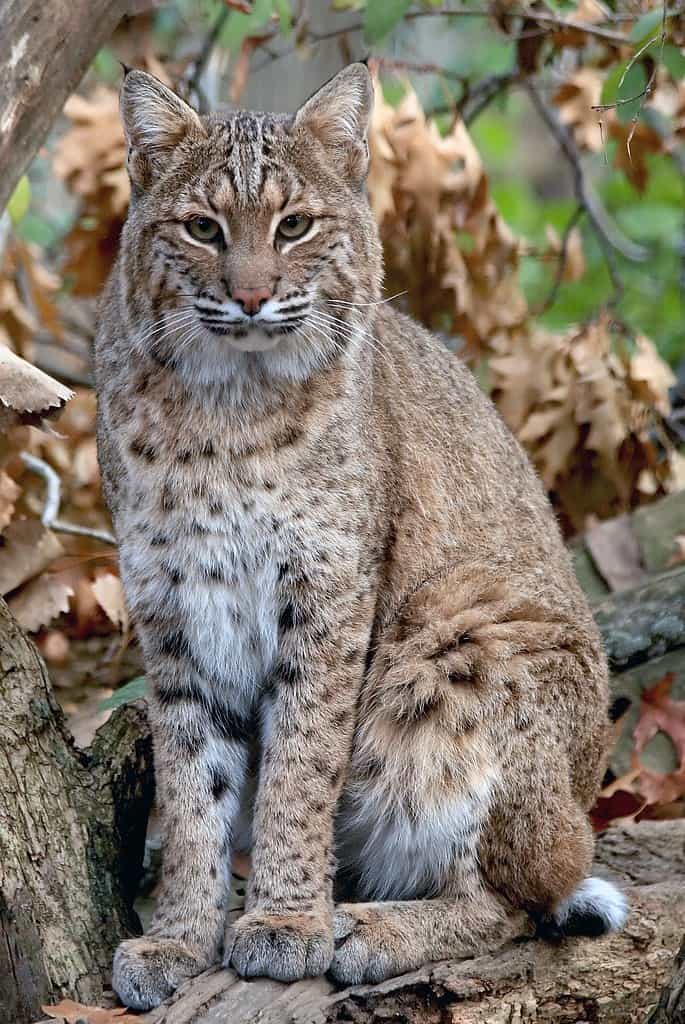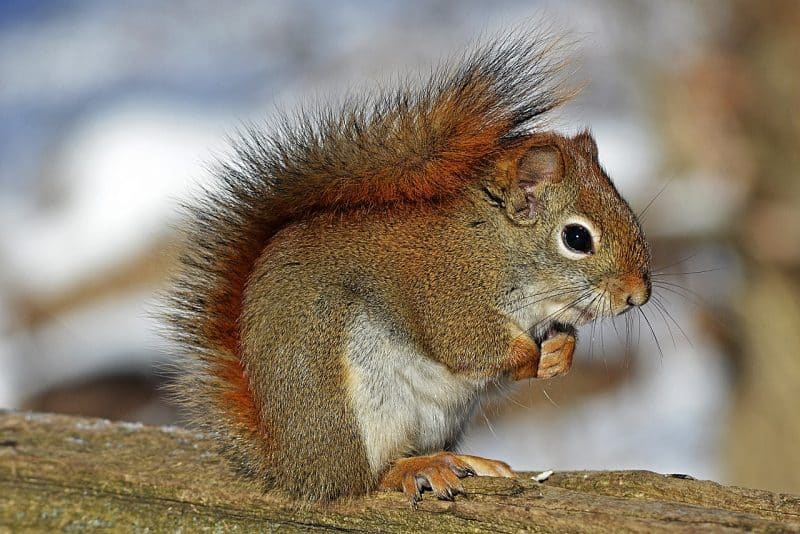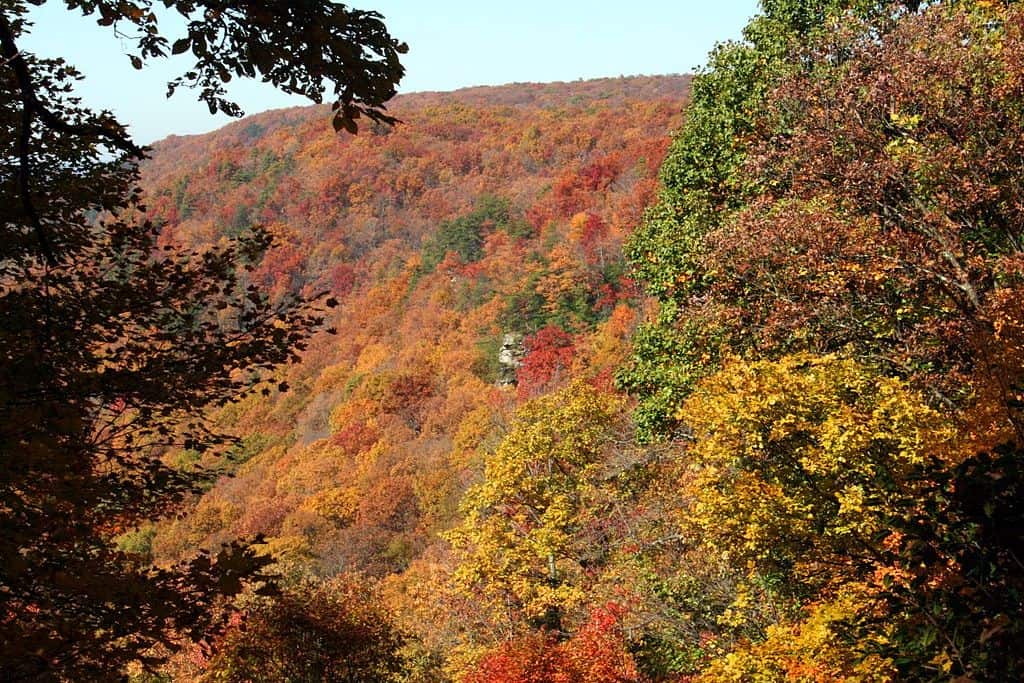Virginia has a wide variety of different animals and wildlife. It boasts around 41 provincial and 22 national parks, including thousands of camping sites.
Virginia is covered with many forests and valleys so that the land can have many wild mammals of different types. Species of shrews, bats, skunks, and squirrels are the wild mammals found in Virginia. It has a large population of white-tailed deer. Predators include the black bear, coyotes, pumas, bobcats, etc.
Amphibian wildlife in Virginia includes different salamanders, frogs, toads, and mudpuppies. Reptiles consist of other snake species, among which the three most commonly found are Northern Copperhead, Eastern Cottonmouth, and Timber Rattlesnake. Virginia can be divided into five other natural regions ranging from coastal and wetlands to lowland areas to hills and mountains. Virginia water is spotless, clear, and valuable for fishing enthusiasts.
Fish found in rivers and lakes of Virginia are perch, pike, trout, and bass. Technically Virginia does not have any state animal, but it has a country bird, a bat of the state, a country dog, a world fish, and a country insect. The American foxhound is the country’s dog and can be logically considered the state animal of Virginia.
Click below to jump to a section on the animals in West Virginia:
North American River Otter

North American river otter is a semiaquatic mammal that is found to be only living in North America. It is also known as river otter or just northern river otter. It is generally found living along the sides of water and coasts. Adult North American river otters weight around 5 to 14 kilograms. Its thick coat of fur is present on its body, providing good protection. North American river otter belongs to the weasel family. These animals in West Virginia can be both on land and water.
It makes burrows close to lake swamps, tidal flats, coastal shores, etc. They make multiple openings in these caves, so they easily enter and exit the water body. The female North American river otter gives birth to young river otters in these burrows made nearby water. Like other predators, the North American river otter prey on the most efficient and readily accessible animal species. Fish is delicious food for these river otters, but they also feed on other animals like mussels, snails, tiny turtles, crayfish, salamanders, and frogs.
Suckers, catfish, and perch are the most common fish these river otters consume. Some reports show that river otters are also found eating birds, dogs, mice, squirrels, and other small animals accidentally killed and drowned. Due to the formation of European colonies in America, the number of North American river otters is decreasing. Environmental pollution is a significant factor leading to the decline in North American river otters.
Where to find North American River Otters in West Virginia
In South Carolina, one can find river otters on coastal shores. The river otter is the most abundant species in South Carolina, located in Keowee Lake.
Bobcat

A long-legged feline with giant paws, a reasonably short body, and tufted ears, the bobcat is 60-100 cm long, barring the 10-20-cm tail, stands 50-60 cm at the shoulder, and weighs 7-15 kg. Its fur, stiffer and less significant than the lynx’s, is pale brown to rosy with dark spots. The underparts are white; the tip of the tail is dark above and white beneath. In some cases found in rural regions, the wildcat is nighttime, for the most part, a single feline. Similarly, it is less disposed of at home in woods and deserts than the lynx to climb trees or swim.
It benefits rodents, bunnies, rabbits, and a few birds. Reproducing happens in spring (now and again a second time later in the year); a litter of one to six cats is brought into the world after a growth time of around 50 days. Financially, the catamount is valuable as a furbearer and is significant in keeping the quantities of rodents and bunnies taken care of.
The wildcat is a nighttime and lone creature, the most dynamic covert of night, and tends to do most of its hunting during first light and nightfall. In the daytime, wildcats rest and rest in a nook which could be an empty tree or a stone cleft, with one individual involving various lairs in its home reach. These felines are exceptionally regional and will check their reach with fragrance and make unmistakable tree hook markings to tell others of their presence.
The males have an enormous reach, frequently covering a few more modest female regions. However, felines won’t collaborate until the reproducing season in the colder time of year. During the remainder of the year, catamounts keep away from each one more to limit the gamble of being harmed during a battle. The catamount scarcely at any point expresses, even though it frequently yowls and murmurs during the mating season.
Where to find Bobcats in West Virginia
Bobcats include boreal coniferous and mixed forests in the north, coastal swamps in the southeast, bottomland hardwood forests, and desert and scrublands in the southwest, alongside other animals in West Virginia.
Bog Turtle

The lowland turtle is the littlest turtle found in the United States. The enormous swamp turtle at any point located is estimated at just 4.5 inches. Marsh turtles are handily recognized by the patches of orange viewed at the edge of their heads. Marsh turtles are possibly the most exciting turtle in the United States. Regulations restricting the assortment of the available turtles done close to nothing to stop the training, with marsh turtles being a valued animal variety in numerous creature illicit businesses.
Lowland turtle populaces are partitioned into two particular populaces isolated by a 250-mile distance. The northern populaces found in Connecticut, Massachusetts, New York, Pennsylvania, New Jersey, Delaware, and Maryland are recorded as undermined. The southern populaces in Georgia, North Carolina, South Carolina, Tennessee, and Virginia are recorded as compromised because of the similitude of appearance. The current lowland turtle populace is obscure. However, gauges range from 2,500 to 10,000. Obtrusive plants, for example, the purple loosestrife, can dry out vast areas of appropriate natural surroundings.
Purple loosestrife fills in enormous, conservative clusters invulnerable to the turtle, confining its development. Marsh turtles are very touchy with the impacts of a dangerous atmospheric deviation, and the turtle’s endurance is intently attached to its fragile living space. Whimsical atmospheric conditions because of an Earth-wide temperature boost will upset the delicate equilibrium key to the turtle’s endurance.
By changing hydrological cycles, a worldwide temperature alteration will either dry out or flood the turtle’s environment. Notwithstanding marsh turtles requiring an unmistakable climate, a large part of the excess territory in the Northeast has been divided, separated by streets and advancement. As the changing environment adjusts the accessibility of the turtle’s ongoing living space, they will have a highly restricted capacity to move to places that could be more appropriate.
Where to find Bog Turtles in West Virginia
Bog turtles are mostly found living in wetlands, wet pastures, and wet meadows with other animals in West Virginia.
Fox Squirrel

The fox squirrel’s total length is estimated to be 20 to 30 inches, with a body length of 10 to 15 inches and a comparable tail length. They range in weight from 1.0 to 2.5 pounds. There is no sexual dimorphism in size or appearance, and people will often be more modest in the west. Tinge has three particular topographical stages: The creature’s chest area is brown-dim to brown-yellow with a regular caramel-orange underside in many regions.
While in eastern locales, for example, the Appalachians, there are all the more strikingly-designed dull brown and dark squirrels with white groups on the face and tail. In the south are detached networks with uniform dark coats. To assist with climbing, the squirrels have sharp paws, created extensors of digits and flexors of lower arms, and stomach muscular structure. Fox squirrels have superb vision and evolved feelings of hearing and smell. The genuine types of pines and oaks themselves may not generally be a considerable thought in characterizing fox squirrel living space.
Fox squirrels are often noticed rummaging on the ground a few hundred meters from the closest woodlot. Fox squirrels additionally usually possess woods edge living space. Food propensities for fox squirrels rely to a great extent upon the geographic area. Generally, fox squirrel food sources incorporate poles, tree buds, bugs, tubers, bulbs, roots, bird eggs, pines and spring-fruiting trees, and parasites. Horticultural harvests like corn, soybeans, oats, wheat and organic product are additionally eaten. Pole eaten by fox squirrels generally incorporates turkey oak, southern red oak, blackjack oak, blue jack oak, post oak, and live oak.
Where to find Fox Squirrels in West Virginia
Fox squirrels are most bountiful in open woods remains with little understory vegetation; they are not found in remains with thick undergrowth. Ideal living space is small stands of giant trees blended with horticultural land and other West Virginia animals. The size and dispersing of pines and oaks are among the significant highlights of fox squirrel territory.
Northern Cardinal

The male northern cardinals all game some bright red plumage, at any rate. All species are nonmigratory and give clear whistled tunes. Males are dazzling reddish with a dark-colored veil and orange mouth. Females cardinal birds are more highly brown or red. This species has since extended its reach as far north as southwestern Canada.
The two guys and females whistle all year, and a couple might raise to four broods a year. The desert cardinal is typical of the thistle clean of the American Southwest. Less conspicuous than the northern cardinal, this dim bird with a red veil is likewise called pyrrhuloxia (previously some portion of the bird’s logical name, consolidating the Latin name for the bullfinch with a Greek reference to the bent, squat bill). It frequently rummages in little rushes.
The sort Cardinalis — which additionally incorporates the vermilion cardinal, is put in the family Cardinalidae. Alluded to as cardinals, different birds have a place with the variety Paroaria, which is gathered with the tanagers. Individuals from the sort can be found across South America and on a few islands in the Caribbean Sea. A few animal types have an incredibly colossal reach. For instance, the red-covered cardinal, named for its apparent redhead, diverges from its dark throat and wings and is local to a considerable part of northern South America.
Where to find Northern Cardinals in West Virginia
They mostly live in thickets, woodland areas, suburban gardens, towns; desert washes with other animals in West Virginia.
Summary of Animals in West Virginia
A large number of animals are found in West Virginia. Virginia can be divided into five natural regions, from coastal and wetlands to lowland areas to hills and mountains. The Virginia Department of Wildlife Resources reports more than 100 mammals in the province, but that is already the case with wildlife, including more than 200 birds and birds. Much of Virginia’s wildlife resembles neighboring states such as Tennessee and North Carolina.
Black bears, white-tailed deer, squirrels, and other rodents are all vital parts of the natural world, such as eagles and foxes. Virginia water is spotless, clear, and valuable for fishing enthusiasts. Fishes found in rivers and lakes of Virginia are perch, pike, trout, and bass. Technically Virginia does not have any state animal, but it has a country bird, a bat of the state, a country dog, a world fish, and a country insect. The American foxhound is the country’s dog and can be logically considered the state animal of Virginia.
If you enjoyed reading the above about animals in West Virginia, check out animals in Wisconsin and Alberta next!
Join our Forum for free today!

- These are The 5 Largest Great White Sharks Ever Recorded - July 19, 2024
- The Surprising Benefits of Big Game Hunting - July 18, 2024
- $100k+ Hunting Experiences The Most Expensive Animals to Pursue - July 17, 2024




